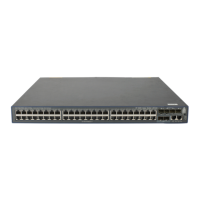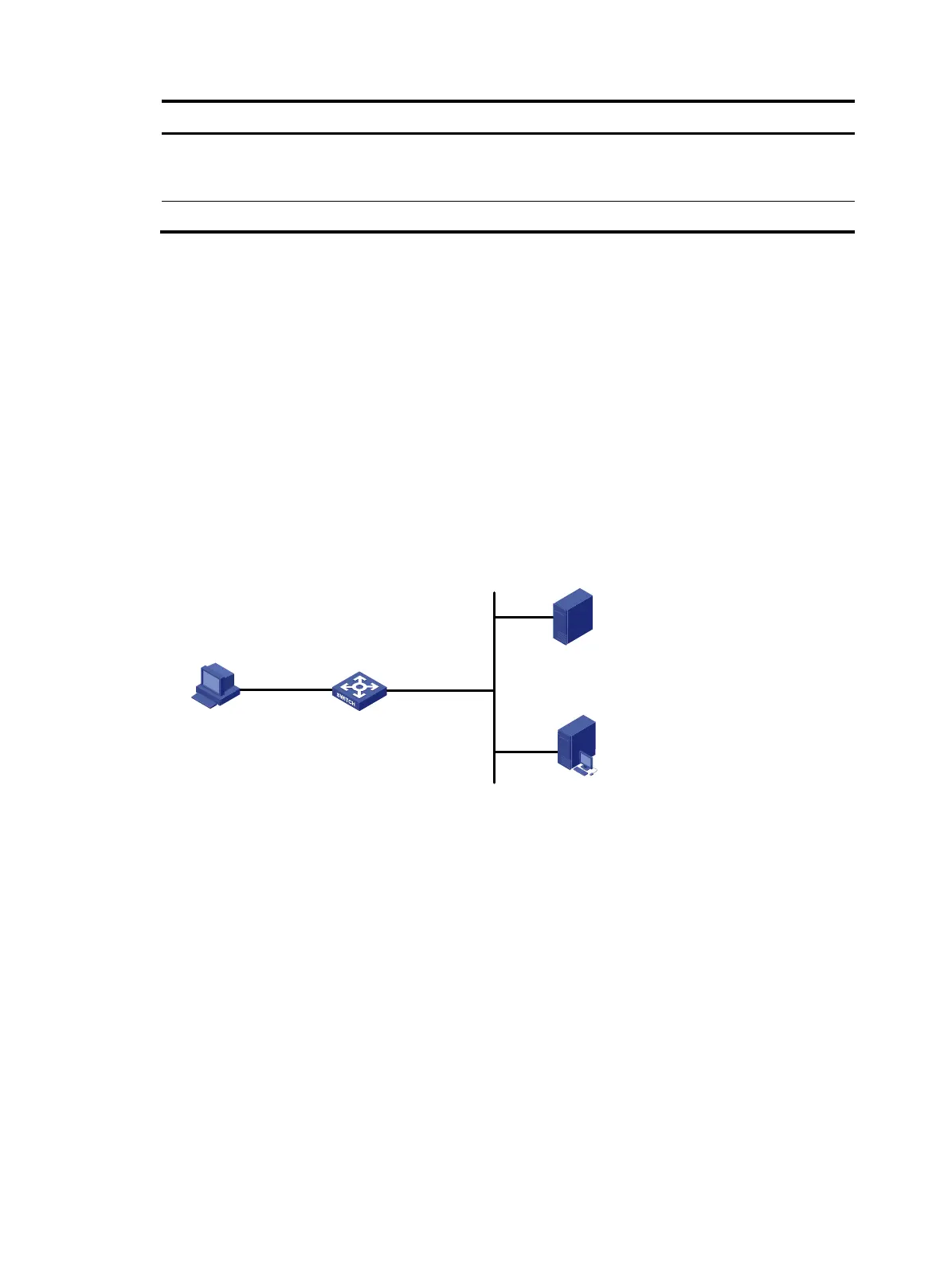150
Task Command Remarks
Clear portal server statistics on a
specific interface or all interfaces.
reset portal server statistics { all |
interface interface-type
interface-number }
Available in user view
Clear TCP spoofing statistics. reset portal tcp-cheat statistics Available in user view
Portal configuration examples
Configuring direct portal authentication
Network requirements
As shown in Figure 45:
• The host is directly connected to the switch and the switch is configured for direct authentication. The
host is assigned with a public network IP address either manually or through DHCP. Before passing
portal authentication, users can access only the portal server. After passing portal authentication,
users can access Internet resources.
• A RADIUS server serves as the authentication, authorization, and accounting server.
Figure 45 Network diagram
Configuration prerequisites
Configure IP addresses for the host, switch, and servers as shown in Figure 45 and make sure they can
reach each other.
Configure the RADIUS server properly to provide authentication and accounting functions for users.
Configuring the portal server (IMC PLAT 5.0)
This example assumes that the portal server runs on IMC PLAT 5.0(E0101) and IMC UAM 5.0(E0101).
# Configure the portal server.
Log in to IMC and select the Service tab. Then, select User Access Manager > Portal Service
Management > Server from the navigation tree to enter the portal server configuration page, as shown
in Figure 46.
• C
onfigure the portal server parameters as needed. This example uses the default settings.
RADIUS server
Switch
Host
2.2.2.2/24
Gateway:2.2.2.1/24
Vlan-int100
2.2.2.1/24
Vlan-int2
192.168.0.100/24
Portal server
192.168.0.111/24
192.168.0.112/24

